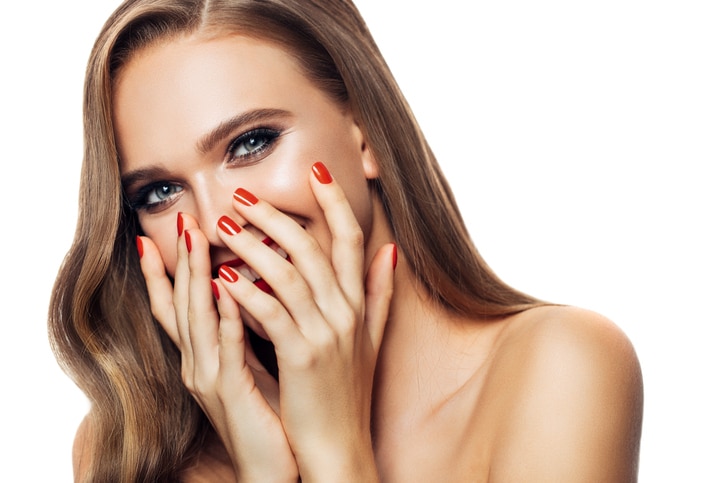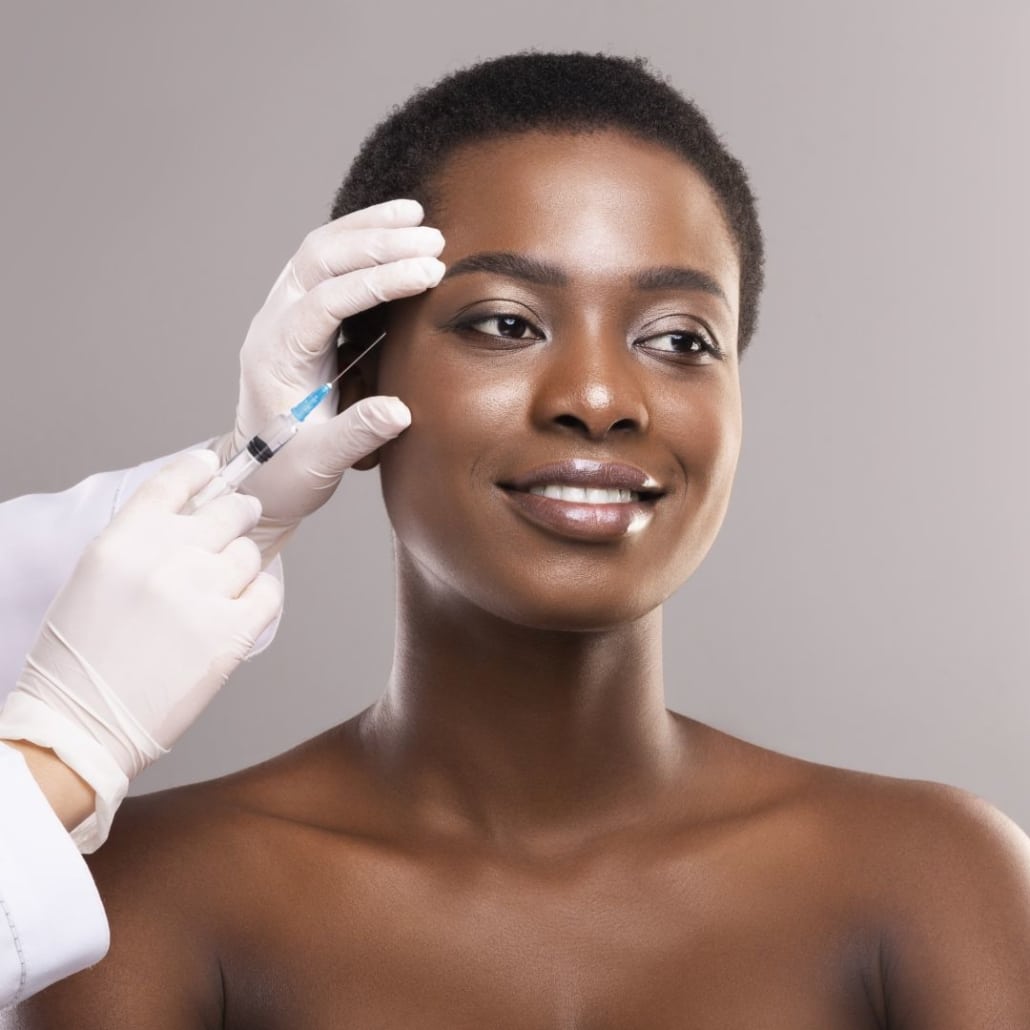
Dysport injections are ideal for nearly anyone wishing to reduce the appearance of fine lines and wrinkles on the face and restore a younger, more refreshed appearance. The injections are administered directly into the facial muscles that cause frown lines and other wrinkles; these injections are generally painless, with no need for anesthesia. Treatment sessions typically take less 15 minutes, and are administered at six-week intervals. Three to five injections are usually required to achieve desired results.

What is the main difference between Dysport and Botox?
Botox and Dysport share a similar base ingredient, Clostridium botulinum. Both are classified as neuromodulator drugs, which means that they work by inhibiting muscle contractions. Furthermore, the drugs are used to treat similar concerns. Still, these minimally invasive treatments are not identical. Their differences lie in their trace ingredients and their manufacturing processes.
Difference number one between Dysport and Botox is their concentration. Dysport is a more diluted product and is about one-third of the potency of Botox per unit. This stems from the smaller protein molecules in this product. Smaller proteins are more likely to resist breakdown by antibodies, which is desirable for many patients. Because Dysport is more diffuse, the protein can spread farther and more quickly than Botox when injected into muscles.
Another difference between Dysport and Botox is their molecular weight. The protein molecules in Botox are a consistent 900 Kilodaltons. Dysport, on the other hand, is composed of various protein molecule sizes. This, too, plays into the spread of the drug beneath the skin and may also result in fewer injections to achieve a pleasing outcome.
Ultimately, the differences between Dysport and Botox are insignificant as it relates to outcomes. Both drugs are commonly used to address the same cosmetic concerns.
Where on the face is Dysport used?

Dysport is used to treat crow’s feet at the outside of the eyes, frown lines (the 11s) between your eyebrows, and forehead lines.
Who is a candidate for Dysport?
Dysport is FDA-approved for adults age 18 and older. Healthy adults who are interested in postponing, reducing or eliminating various dynamic wrinkles can be excellent candidates for this injectable treatment. As a neuromodulator, Dysport is designed to treat specific types of wrinkles. Dynamic wrinkles are those that result from facial expressions. Over time, as muscles move repetitively in the same motion, creases in the overlying skin remain visible even when the face is at rest. The dynamic wrinkles that once disappeared turn into ever-present static wrinkles. Dysport prevents the offending muscles from moving, allowing the skin to relax and lie smooth.
You may be a good candidate for Dysport if you wish to correct:
- Frown lines
- Crows feet
- Forehead lines and creases
- Drooping eyebrows
- Downturned corners of the mouth
Who is not a good candidate to have Dysport injections?
To be right for Dysport with Dr. Jeffrey Maehara you must be interested in erasing lines and wrinkles on the upper third of the face, the expressive area. That’s because wrinkles around the eyes, between the brows, and on the forehead are the result of muscle contractions under the skin.
But if you want to address lines, wrinkles, and areas of volume loss on the mid to lower face, you aren’t a candidate for Dysport. If you want to treat smile lines, marionette lines, parentheses lines, barcode lines, sunken cheeks, and other issues, you want Dr. Maehara to inject one of our dermal fillers.
Can I combine Dysport injections with other injectables?

Neuromodulators are used on the upper third of the face, the expressive area, where muscle contractions eventually create wrinkles on the surface skin above the muscle. Dermal fillers are used on the mid to lower face to address issues such as smile lines, marionette lines, and the like. Not only do neuromodulators and fillers work in different ways, but they also work on different areas of the face.
So, you could come in and have Dr. Maehara inject Dysport to erase your crow’s feet at the outside of your eyes. Then in the same session, he could use Juvéderm or Restylane to remove your parentheses lines, nasolabial folds, or other issues in the mid to lower face.
Is Dysport injections painful or cause discomfort?
No. Injectable treatments are performed using gentle technique and a very small needle. We prioritize patient comfort and take our time to ensure that the process is virtually painless.
Is there a limit on how many injections I can receive?
Every person who receives Dysport injections may respond uniquely, which is why we recommend assessing results after two weeks. At that time, some patients desire a touch-up to achieve a little more improvement in a given area. Generally, Dysport injections are scheduled 3 to 4 times a year with about 90 days in between appointments.
What are the side effects with Dysport?
Botox has been injected millions of times around the world and has proven to be very safe and effective. Dysport is basically the same as Botox. Patients can have some slight redness and swelling at the injection sites, but this typically passes in a day or so. Some people can develop a headache over the first day after their injections, but this is rare.
The main risk is having Dysport injected into the wrong muscle, leading to issues such as a drooping eyelid. Dr. Maehara is a board-certified ophthalmologist. He handles all of these injections, and his extensive knowledge of facial anatomy ensures you’ll love the results of your Dysport injections.
What should I do to prepare for my Dysport injection?
Dysport injections may be administered immediately after our thorough consultation and assessment of the skin. To be prepared for this treatment, you may want to avoid aspirin, anti-inflammatory medication, supplements and medications that thin the blood, and alcohol. These products may increase the risk of bruising and swelling.
What should I expect from my results after my Dysport injections?
The results of Dysport injections may build gradually for up to 14 days. The quickness of results can vary based on a patient’s age and genetics. We encourage patients to wait a full two weeks before assessing the final results of their treatment. Once the muscles have relaxed and the skin looks smoother and younger, these effects can last between 3 and 4 months before they begin to fade.
Patient Testimonial
“I love Dr. Maehara. His staff is kind, and helpful and he inspires confidence. Highly recommend. You’ll get straight answers and professional help here.”
Do the results of Dysport look natural?
Dysport is very similar to Botox, only a little more diluted. Botox is one of the world’s most famous, and well-known brand names. It has been injected hundreds of millions of times around the world since its debut in the U.S. in 2002. Currently, in the U.S. alone, over 6 million Botox injections are given every year.
These neuromodulators would not have this level of popularity if they didn’t deliver the kinds of results patients seek. Bottom line, Dysport (and Botox and Xeomin) are highly effective for rejuvenating the upper third of the face. Plus, Dr. Maehara’s extensive knowledge of facial anatomy ensures your results from Dysport injections will look completely natural.
What is recovery like from Dysport? Will I be limited?
There is no need to take time off work or most other activities after getting Dysport. We do suggest a few temporary modifications, including:
- Avoid rubbing or touching the treatment area for 4 hours after injections.
- Do not get a facial or massage in the 4 hours after injections. This can cause the product to spread away from the intended area.
- Do not lie down for 4 hours after getting Dysport. Remaining upright helps the product absorb only in the intended target muscles.
- Avoid excessive heat and strenuous activity for 4 hours after treatment to prevent excessive swelling and potential bruising.
